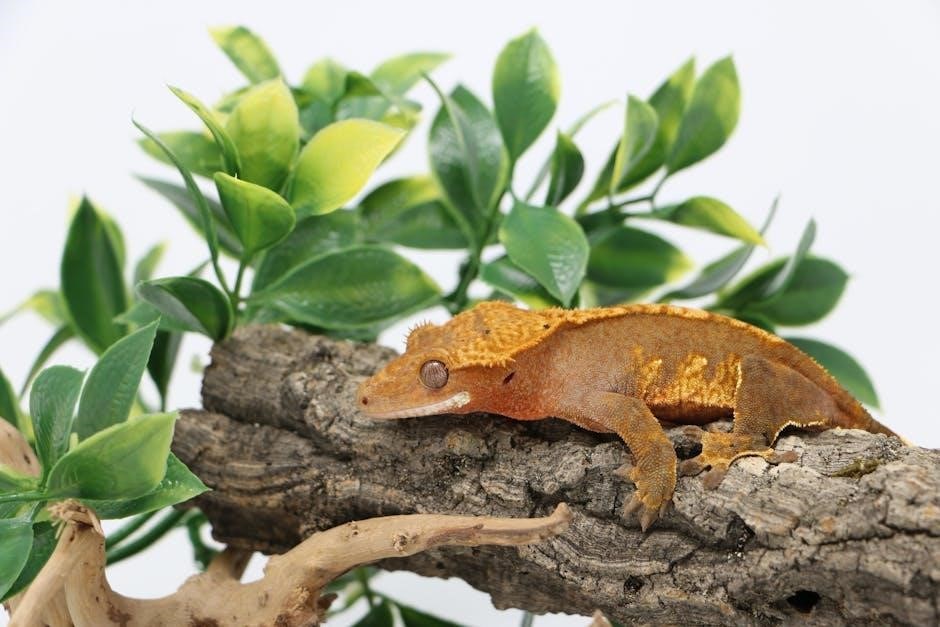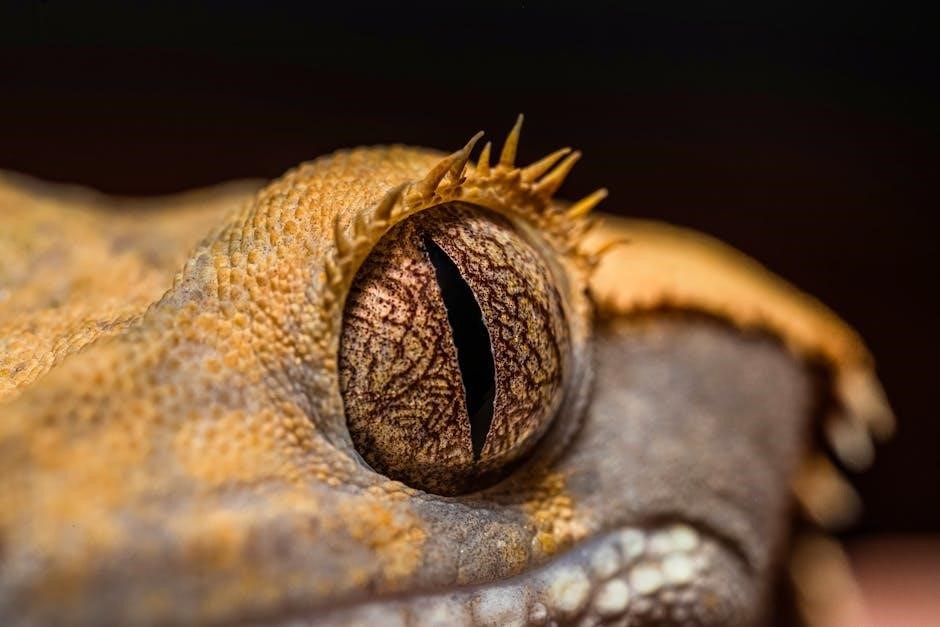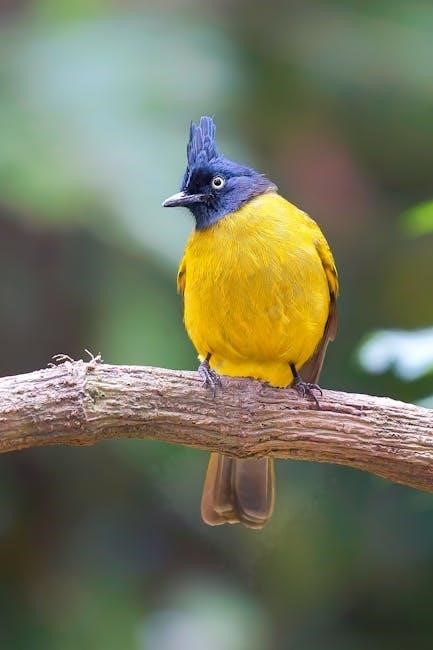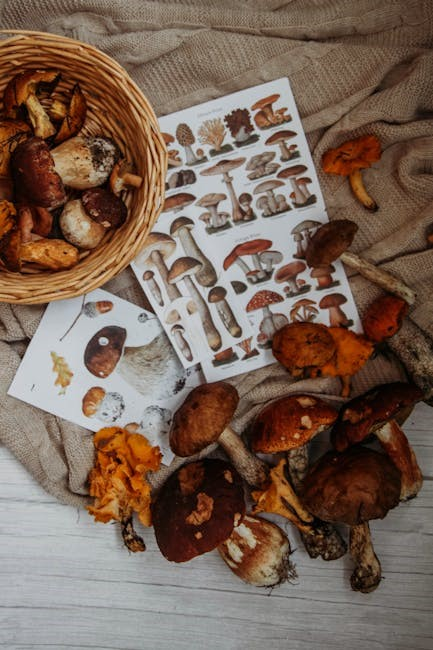Crested geckos exhibit diverse color and pattern variations, known as morphs, which are genetic traits developed through selective breeding. These unique characteristics make them highly sought-after pets.
1.1 Understanding Crested Gecko Morphs and Their Popularity

Crested gecko morphs refer to the diverse genetic traits that define their color and pattern variations. These unique characteristics, such as base colors, patterns, and traits like pinstripes or Dalmatian spots, have captivated hobbyists. The ability to combine these traits creates an array of visually stunning morphs, making crested geckos highly sought after as pets. Their popularity stems from their striking appearance and the endless variety of genetic expressions.
1.2 Brief History of Crested Gecko Breeding and Morph Development
Crested geckos were first introduced to the pet trade in the 1990s after being rediscovered in 1994. Initially, breeding focused on establishing a stable population. Over time, selective breeding highlighted genetic variations, leading to the development of distinct morphs. The discovery of traits like Dalmatian spots and Harlequin patterns revolutionized the hobby, driving the creation of new and unique morphs that captivated enthusiasts worldwide.
Common Crested Gecko Morphs
Crested geckos feature diverse morphs, including Patternless, Bi-Color, Dalmatian, Tiger/Brindle, Flame, Harlequin, and Extreme Harlequin. These popular morphs showcase unique color and pattern variations, appealing to enthusiasts worldwide due to their genetic diversity.
2.1 Patternless Morph
The Patternless morph is characterized by a lack of distinctive markings or patterns, featuring solid base colors such as cream, yellow, orange, pink, red, brown, dark brown, tan, and olive. This morph is highly valued for its simplicity and uniform appearance, with the least amount of spots or markings being preferred. The color variations range from light to dark shades, making each Patternless gecko unique despite its minimalistic look. Crested geckos with this morph are often described as having a clean and sleek appearance, which makes them a popular choice among enthusiasts. Their color intensity can vary, and they may exhibit slight variations in tone, but the defining trait remains the absence of patterns. This morph is a great example of how subtle beauty can be just as captivating as more elaborate designs. Additionally, the Patternless morph can serve as a base for combining with other traits, allowing for further diversity in appearance. Overall, the simplicity of this morph has earned it a special place in the world of crested geckos, offering a wide range of colors without the complexity of patterns. This makes the Patternless morph both elegant and versatile, appealing to those who appreciate understated beauty. Furthermore, the lack of markings allows the natural coloration of the gecko to take center stage, highlighting the beauty of their base hues. As a result, the Patternless morph remains a favorite among both new and experienced keepers, providing a classic and timeless option in the diverse world of crested geckos. Their ease of care and stunning color variations make them a wonderful addition to any collection, showcasing the natural beauty of these amazing creatures. In conclusion, the Patternless morph is a testament to the genetic diversity of crested geckos, offering a wide array of colors and a clean, unmarked appearance that captivates enthusiasts worldwide.
2.2 Bi-Color Morph
The Bi-Color morph showcases two distinct colors, often with a vibrant contrast between the body and extremities. This morph is known for its striking appearance, where one color dominates the main body, while the other highlights the legs, arms, and tail. The color combination can vary widely, ranging from yellow and red to orange and brown, creating a visually appealing contrast. Bi-Color geckos are popular for their bold and dynamic look, which adds a unique flair to their overall appearance. This morph is a result of selective breeding and genetic variation, emphasizing the diversity within crested geckos. The Bi-Color pattern is relatively common, making it accessible to many enthusiasts. The contrast between the two colors can range from subtle to intense, depending on the specific combination. This morph is also notable for its ability to display color intensity changes, especially when the gecko is “fired up.” The Bi-Color morph is a favorite among collectors who appreciate its aesthetic appeal and the variety it offers. It is also a great option for those looking to add a touch of vibrancy to their collection. With its eye-catching dual tones, the Bi-Color morph stands out as a beautiful example of crested gecko diversity, making it a sought-after choice in the pet trade.
2.3 Dalmatian Morph
The Dalmatian morph is characterized by distinctive spots on the gecko’s body, which can be black, red, or greenish in color. These spots vary in size and may increase in number as the gecko ages. Dalmatian crested geckos often start with few spots and develop more over time. This morph can occur alongside other patterns, such as Harlequin or Pinstripe, creating unique combinations. The spots add a striking visual element, making Dalmatian geckos highly desirable. Their appearance mimics the natural genetic traits seen in wild crested geckos, adding to their allure. The Dalmatian trait is popular for its aesthetic appeal and genetic uniqueness, offering a captivating look for collectors; This morph is a testament to the genetic diversity within crested geckos, showcasing their ability to exhibit natural patterns through selective breeding. The Dalmatian morph remains a favorite among enthusiasts for its distinctive and eye-catching appearance, blending beauty with genetic interest. Their spots can range from small pinpricks to larger, more prominent markings, enhancing their overall charm. As a result, Dalmatian crested geckos are both visually striking and genetically fascinating, making them a standout choice for many hobbyists. This morph exemplifies the unique traits that make crested geckos so popular in the pet trade, offering a blend of natural beauty and genetic diversity.
2.4 Tiger/Brindle Morph
The Tiger/Brindle morph features bold, striped or marbled patterns, resembling a tiger’s stripes or brindle markings. These geckos display contrasting colors in a dynamic, intricate design. The brindle pattern often appears as swirling mixtures of base and accent colors, creating a unique, high-contrast look. This morph is prized for its striking visuals and genetic complexity. The tiger pattern typically shows well-defined stripes, while brindle offers a more blended appearance. Both variations add significant visual interest, making Tiger/Brindle geckos highly sought after. Their patterns can vary widely, from sharp, defined lines to softer, more mottled effects. This diversity within the morph allows for a wide range of aesthetic appeal, captivating collectors and enthusiasts alike. The Tiger/Brindle morph is a standout example of the genetic diversity in crested geckos, offering a blend of beauty and uniqueness that enhances their popularity in the pet trade. This morph continues to be a favorite for its dynamic and visually striking appearance, making each Tiger/Brindle gecko a one-of-a-kind companion. Their intricate patterns and vibrant colors showcase the artistry of nature and selective breeding, ensuring their place as a beloved choice among crested gecko enthusiasts. With their bold and eye-catching designs, Tiger/Brindle geckos remain a highlight in any collection, exemplifying the genetic wonders of these remarkable creatures.
2.5 Flame Morph
Crested geckos with the Flame morph display a unique pattern characterized by a vivid, fiery appearance. Their base color is often accompanied by a contrasting stripe running along the dorsal area, creating a striking visual effect. Some Flame morphs may have additional highlights or subtle markings, enhancing their overall appeal. The Flame morph is popular for its bold, yet elegant look, making it a favorite among enthusiasts. This morph showcases the genetic diversity in crested geckos, offering a range of colors from deep oranges to bright yellows. The Flame pattern can vary in intensity, with some geckos having a solid stripe and others displaying more intricate details. This variety adds to the allure of the Flame morph, ensuring each gecko has a distinct appearance; The Flame morph is a testament to the creativity of nature and selective breeding, providing a vibrant and eye-catching option for collectors. With their dynamic colors and striking patterns, Flame morph crested geckos continue to captivate the reptile community, offering a blend of beauty and uniqueness that sets them apart.
2.6 Harlequin and Extreme Harlequin Morphs
Harlequin and Extreme Harlequin morphs are characterized by striking patterns featuring a base color overlaid with another color on the dorsal area. The Harlequin morph displays a balanced mix of colors, while the Extreme Harlequin exhibits a more intense, vibrant pattern with greater color coverage. These morphs are highly sought after for their unique, visually stunning appearances, making them a favorite among collectors and enthusiasts alike.

Key Traits in Crested Geckos
Key traits like pinstripe, Dalmatian spots, and axanthic define unique features, enhancing morph diversity and visual appeal, making each crested gecko genetically distinct and visually striking.
3.1 Pinstripe Trait
The pinstripe trait in crested geckos features a distinct line of raised, lighter-colored scales running along the dorsal area. This trait can vary in prominence and continuity, with some geckos displaying a full stripe while others may have breaks. The pinstripe is a genetic characteristic that adds aesthetic appeal and can enhance other morph features, making each gecko unique. Breeders and enthusiasts often seek this trait for its striking visual effect.
3.2 Dalmatian Spots
Dalmatian spots are a genetic trait characterized by distinct, rounded markings on a crested gecko’s body. These spots can range from small pinpricks to larger blotches, typically appearing in black, red, or greenish hues. Dalmatian crested geckos often develop more spots as they mature, adding unique visual interest. This trait can occur alongside various morphs, enhancing their appeal among enthusiasts and breeders alike.
3.3 Axanthic Trait
The axanthic trait in crested geckos results in the reduction or absence of yellow pigmentation, creating a unique, muted color palette. This genetic characteristic can manifest across various morphs, producing geckos with striking monochromatic or contrasting hues. Axanthic geckos often display enhanced patterns and a sophisticated appearance, making them highly desirable in the pet trade and among collectors for their distinctive beauty and rarity.

Crested Gecko Color Variations
Crested geckos display a wide range of colors, from base hues like yellow and red to intricate tri-color combinations and rare morphs with unique pigmentation patterns.
4.1 Base Colors (Buckskin, Yellow, Red, etc.)
Base colors form the foundation of a crested gecko’s appearance, with common hues including buckskin, yellow, red, and tan. These colors are often solid and serve as the primary tone, influencing other morphs and traits. Buckskin geckos, for instance, closely resemble their wild counterparts, while yellow and red base colors add vibrant, striking accents to their patterns and overall look.
4.2 Tri-Color Variations
Tri-color crested geckos display three distinct colors, typically combining base hues like yellow, brown, and cream. These variations often occur in morphs such as Harlequin or Pinstripe, where the colors blend harmoniously, creating visually striking patterns. Tri-color geckos are highly valued for their unique and intricate appearance, making them a favorite among enthusiasts and collectors seeking diversity in their pets.
4.3 Rare and Unique Color Morphs
Rare and unique color morphs, such as melanistic and axanthic variations, offer distinctive appearances that captivate collectors. Melanistic geckos display intense, darker hues, while axanthic morphs lack yellow pigmentation, resulting in striking color contrasts. These morphs are highly sought after due to their exclusivity and visual appeal, often commanding premium prices in the pet trade. Their rarity adds to their allure among enthusiasts.
Combining Morphs and Traits
Combining morphs and traits creates unique patterns, enhancing visual appeal. For instance, a pinstripe can complement a harlequin morph, resulting in a striking, one-of-a-kind crested gecko appearance.
5.1 How Different Morphs and Traits Interact
Morphs and traits interact genetically, creating unique visual effects. For example, a pinstripe trait can enhance a Harlequin morph, while Dalmatian spots can add complexity to a Bi-Color morph. These combinations result in distinctive patterns and colors, showcasing the gecko’s genetic diversity and aesthetic appeal. Understanding these interactions helps breeders predict and achieve specific visual outcomes, making each crested gecko truly one-of-a-kind.
5.2 Examples of Combined Morphs and Traits
Crested geckos often display stunning combinations of morphs and traits. For instance, a Harlequin morph paired with a pinstripe trait creates a striking, high-contrast pattern. Similarly, Dalmatian spots can complement a Bi-Color morph, adding unique visual interest. Another example is the Tiger/Brindle morph combined with axanthic traits, resulting in a vibrant, pattern-rich appearance. These combinations highlight the gecko’s genetic diversity and aesthetic appeal.

Crested Gecko Morph Guide: Care and Maintenance
Proper care ensures Crested Geckos thrive. Provide a balanced diet, suitable habitat, and appropriate lighting to meet their nutritional and environmental needs for optimal health and color vibrancy.
6.1 Diet and Nutritional Requirements
Crested Geckos require a balanced diet for optimal health. Feed vitamin-enriched crickets, mealworms, Dubia roaches, and waxworms 2-3 times weekly. Provide calcium and vitamin D3 supplements, especially for juveniles and breeding females. Offer fresh fruit or commercial Crested Gecko Diet (CGD) daily to ensure diverse nutrition. A varied diet supports vibrant colors, energy, and overall well-being in these unique pets.
6.2 Environment and Lighting Needs
Crested Geckos thrive in a humid, well-ventilated environment with temperatures between 75-85°F; Avoid direct UVB lighting; low-wattage nighttime lighting is sufficient. Maintain humidity levels around 50-60% by misting the enclosure daily. Use a substrate like sphagnum moss or coconut fiber. Provide hiding places and climbing surfaces to mimic their natural habitat, ensuring a stress-free and healthy environment for your pet geckos.

Choosing the Right Crested Gecko Morph
Selecting a morph depends on personal preference, experience level, and desired traits. Research popular morphs and traits to find the perfect fit for your preferences and care capabilities.
7.1 Factors to Consider When Selecting a Morph
When selecting a crested gecko morph, consider factors like color preference, pattern appeal, and rarity. Additionally, think about your experience level, as some morphs may be more demanding. Research the gecko’s temperament and care requirements to ensure compatibility with your lifestyle. Budget is also crucial, as rare morphs can be costly. Prioritize traits that align with your personal taste and expertise for the best match.
7.2 Popular Morphs for Beginners
Beginners often prefer simpler, hardy morphs like Patternless or Bi-Color crested geckos. These morphs are easier to care for and less expensive, making them ideal for those new to gecko ownership. Their straightforward traits also make identification simpler, allowing enthusiasts to gain experience without the complexity of rarer or more intricate patterns. These morphs are a great starting point for building confidence and knowledge in gecko care.
8.2 Future of Crested Gecko Morph Development
Crested geckos’ diverse morphs and traits make them fascinating pets. Their unique patterns and colors, combined with gentle care requirements, ensure their enduring popularity among enthusiasts and breeders alike.




